Journal of Tourism & Hospitality
Open Access
ISSN: 2167-0269
ISSN: 2167-0269
Research Article - (2023)Volume 12, Issue 4
The modern travellers are concerned about their safety. Political instability leads to tourist change destination direction. Tourists are very sensitive to their security and safety of the country they go for holidaying. The purpose of this study is to investigate the effect of political instability on tourism business (tourist flow) in Ethiopia; in casa of Bahir Dar town. The study has been used descriptive in design in local community, culture and tourism bureau, domestic tourist and international tourists were chosen as the subjects of the study. The researcher has been used 45 respondents from Culture and Tourism Office of the city 20 , local community 15, domestic tourists 5 and foreign tourist 5 selected proportionally form each selected respondents using purposive sampling. The research has used descriptive research design in combination with qualitative and quantitative research approaches. For obtaining the information, both the primary and secondary data has been used. Primary data was going to be collected through semi structured interview and questionnaires. Secondary data was also be gathered by referring Bahir Dar town culture and tourism bureau documents and other related data. The research has used descriptive research design in combination with qualitative and quantitative research approaches. The data were analyzed by using simple descriptive (qualitative) method and quantitative (numerical) method. The research reveals that the tourism business of the town has been heavily affected in terms tourism arrival and revenue. Furthermore a lot of human power temporarily unemployed due to force fully expelled from the tourism organization as a result of business collapse. The researcher has recommended that the government will strive to bring back peace and stability to the town and to the country as quickly as possible.
Destination; Direction; Tourists; Political instability; Local community
Tourism is growing as one of the export commodities in the world. It has been realized that tourism and travel makes direct, indirect and induced economic impacts to most nations across the world WTTC. The increment in the number of the newly emerged destinations has ignited this industry to make sound contributions to the socioeconomic development UNWTO [1]. In this regard, Ethiopia has come a long way to become one of the new tourist destinations in Sub Saharan Africa region United Nations economic commission for Africa, sub-regional office for Eastern Africa. Ashley and Mitchell argue that despite the concentration of aggregate tourism receipts in developed nations, tourism is relatively more important than rich countries.
However, the tourism industry is susceptible to external shocks such as natural disasters, political unrest, economic crisis, and contagious diseases. These inevitable factors either collectively or separately may adversely affect the tourism industry in particular and the economy of the country in general. In other words, tourism and its contributions are badly hit by the aforementioned incidents. In the 2017 report of global peace index by institute for economics and peace, violence costs 12.6% of world GDP Institute for Economics and Peace (IEP). Straightforwardly, the world tourism organization has defined a tourism crisis as “any unexpected event that affects traveler confidence in a destination and interferes with its ability to continue operating normally” world tourism organisation. In the UNWTO 2015 tourism report, the growing concern over safety and security, coupled with the unusual strong exchange rate fluctuations and the drop of oil and other commodities’ prices, was identified as a factor that influenced the flow of tourists in the same year UNWTO. That is, political unrest can substantially affect the tourism activity and the economy of the country [2]. Moreover, although Fletcher and Morakabati argued that a single terrorism act can adversely harm the tourism industry than coup and internal political problems, Yap and Saha asserted that political instability has significant adverse impact on tourism demand than terrorism. Numerically, in the data compiled by Richard and Clay, political related instability has triggered half of the declaration of state of emergencies over the past three decades in the world followed by natural disasters. On the contrary, the Ethiopian government has repeatedly advocated that state of emergency, which was declared on October 6, 2016, has considerably created conducive environment for tourists to travel within the country, and it (government) publicized through the state media that tourism has not been adversely affected so far due to the political crisis. Chiefly, Ethiopian tourism organization stated that tourists can travel either independently or in group to every part of the country as a result of the declaration of state of emergency Fana broadcasting corporate [3].
Description of study area
Bahir Dar is situated as it is on the southern extremity of lake Tana, providing access to both the lake and its many is lands, and to the Blue Nile falls (Tis-Isat). It is one of the largest and most beautiful cites of the country. Emperor Haile Selassie considered moving the capital from Addis Ababa to Bahir Dar that says much about the city. Distinctively famous for its wide avenues, shaded by rows rustling palms and range of colorful flowering trees, Bahir Dar is an attractive and well planned city and one of safest cities on African soil [4]. And also currently, the city is a teeming, vibrant regional capital with one of the counters’ most chosen tourist and industrial sites. The strategic locations and the natural attractions enabled the city to be a home for diversified social entity. This by itself had made the city, one of the most prime tourist destination sites in the Northern edge of the country. In additional Bahir Dar; one of the largest and most beautiful cities in Ethiopia is located along the shore of lake Tana.
The major tourist attraction area in the Bahir Dar town are:- Blue Nile falls (or Tis-Abay as the locals call it) which is smaller than Niagara but still spectacular water fall, perhaps a more important ‘must see’ is lake TANA, the lake is famous for the 37 islands scattered across its surface of which about 30 shelter some of the oldest churches and monasteries in the world, most of these monasteries are store house of religious relics and are worth exploring, another must see is the palace of Emperor Haile Selassie which stands on Bezawit hill overlooking the Blue Nile and the city and Martyr memorial monument [5].
Location
Bahir dar is located in the North Western part of Ethiopia at a physical distance of 565 kilometers from Addis Ababa, the capital of Ethiopia. Astronomically, the study area is located at 11°29'-11°41' N latitude and 37°16'-37°27'E longitude (Figure 1). The landscape is flat with some small hills to the east and west. The average elevation in the town is about 1795 m.a.s.l. According to the recently revised master plan, the town covers an area of about 16000 hectares. The foundation of Bahir Dar dates back to the 14th century associated with the establishment of Kidane Mehret church near lake Tana [6].
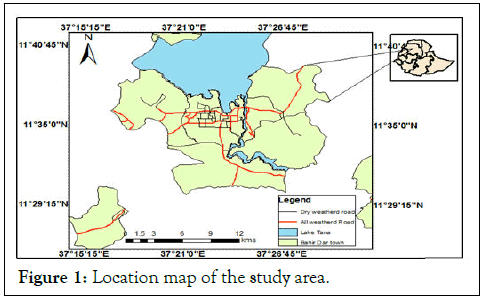
Figure 1: Location map of the study area.
Climate
Bahir Dar has a borderline tropical savanna climate very close to a subtropical highland climate. Afternoon temperatures are very warm to hot year-round, and morning temperatures cool however, the diurnal range is much larger in the largely cloudless dry season [7].
Population
Based on the 2007 Census conducted by the Central Statistical Agency of Ethiopia (CSA), Bahir Dar special zone has a total population of 221,991, of whom 108,456 are men and 113,535 women; 180,174 or 81.16% are urban inhabitants, the rest of population are living at rural kebeles around Bahir Dar. Meshenti, Tis Abayand Zegetowns which are part of Bahir Dar special zone.
Sampling design and sample size
The study has been used descriptive research design because it helps to explain and describe the study in detail. The study was employed through mixed research approach (qualitative and quantitative) explore the issue to understand the fact and also to answer the research question. Since, the quantitative research approaches help to gather numerical data and generalized and also analyzed it [8].
Sampling techniques
Sample size estimation was an important concern for researchers undertaking research projects. The researcher has been used sample size through based up on the responsibility link to standard local community, culture and tourism office, domestic tourist and foreign tourist in Bahir Dar town were targeted population used for the study. Because of the population of the study area was very large difficult to distribute questioner for all members of users so as a result time constraint the researcher has been selected 45 respondents.
The target population is culture and tourism office of the city 20 and local community 15, domestic tourists 5 and foreign tourists were employed. The study was used mixed approach type which means, the qualitative approach and the quantitative approach.
Data collection method
This study was conducted by using primary and secondary data sources to address the objective of the research. Primary data has been gathered through using questioners both interviewers completed format and respondent completion format, in depth interview are main instruments. This study also has been used secondary data source to gather relevant and related information to the study such as published and unpublished document have relation with my study topic [9].
Questionnaire
The questionnaire will designed mainly to generate data on potentials and constraints of CBET, as well local people’s participation, perception of the communities towards the area and wildlife, community attitudes towards CBET and natural resource and about the benefits that they get from the area. For the process of data collection, a survey questionnaire, which consists both open ended and close ended questions, will be used as main tool to gather information from sample households. The questionnaire will be prepared in English and then translated in to local language (Amharic by a colleague of mine who is a native speaker. Finally, questions will administer face to face with the head of the sample household. All the selected sample respondents participated in the administered survey questionnaires.
Interview
In order to accomplish the mixed research approach of this study, face to face in-depth interviews will be conducted with key informants. The semi-structured interview questions will be administered with selected key informants, who are representatives of the stakeholders in the development of community based ecotourism in Bahir Dar in depth interviews, will be conducted until sufficient information will be collected and reached at a saturation point, beyond which there was no any additional information. The choice of these key informants will be based on knowledge, expertise, experience, responsibility and involvement with the tourism sector in the study area.
Focus Group Discussion (FGD)
The FGD, which will be organized by the researcher, will held with ten individuals at the office of the head of Bahir Dar of culture and tourism, open ended questions will be used during the FGD session. The FGD session will be chaired and guided by the researcher and the participants will be encouraged to forward their ideas, opinions, feelings and knowledge regarding the challenges and possibilities.
Field observation
A direct Field observation will also held during data collection because observation is also one of the main instruments of data collection. The field visit allowed the researcher to observe the natural resources of the area, such as flora, fauna, landscape, infrastructure, services and facilities, condition of biodiversity.
Data analysis
The data collected was analyzed by using simple descriptive (qualitative) method and quantitative (numerical) method. The study was interpret the data based on the survey questionnaire, interview and filed observation. The data also was analyzed by using simple descriptive statistics such as percentage and the data are present on tables, charts, picture and percentage also further represented by using graphs and other diagram in order to analyses more information about this study [10].
Demographic characteristics of respondents
The demographic characteristic of the respondents by sex either male or female from the total number of 45 respondents is shown in Figure 2 below. This Figure shows 67% from the number of 20 respondents were male and 33% from the number 15 respondents were female. Generally most of the demographic characteristics of the respondents are male.
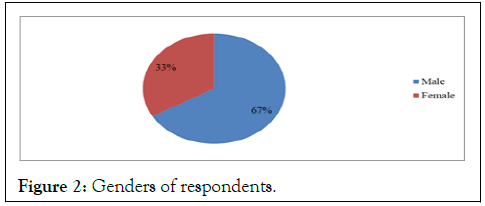
Figure 2: Genders of respondents.
The demographic characteristic of the respondents by age category in percent from the total number of 45 respondents as shown in Figure 2 above. 26.7% from the number of 12 respondents are found between 20-30 age groups which show that they are in an active age group and 44.4 % from the number of 20 respondents are found between 31-40 age groups, 24.4% from the number of 11 respondents are found between 41-50 and the rest 4.4% from the number of 2 respondents are found in >50 age groups. The demographic characteristic of the respondents by the education status in present from the total number of 45 respondents as shown in Figure 3 below. 6.7% from the number of 3 respondents were illiterate, 31.1% from the number of 14 respondents were literate, 22.2% the number of 10 respondents were diploma, and 40% the number of 18 respondents were bachelor degree participated. Generally most of the demographic characteristics of the respondents are male.
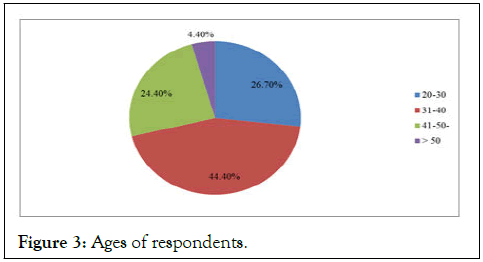
Figure 3: Ages of respondents.
The demographic characteristic of the respondents by the education status in present from the total number of 45 respondents as shown in Figure 3 above. 6.7% from the number of 3 respondents were illiterate, 31.1% from the number of 14 respondents were literate, 22.2% the number of 10 respondents were diploma, and 40% the number of 18 respondents were bachelor degree participated. Generally most of the demographic characteristics of the respondents are male.
The effect of political instability on tourism destination site
As shown indicated in Figure 4 below the number of domestic tourist flow more than international tourist flow because of increased travel time and spending on religious pilgrims. According to the head of culture and tourism office, Bahir Dar town, even though the travel culture of the people is at a lower stage, the domestic tourist flow to Bahir Dar town is increasing from time to time. An indication for this improvement is a total growth rate of domestic tourist flow to the area is increase time to time. One of the major factors accounted for this increment is a progressive change in the domestic travel culture of the people. The other contributing factor for this increment is the opening up of Bahir Dar university. In other words, to attend the graduation ceremony of their sons and daughters, families will get the chance to come to Bahir Dar and visit attractions. Even though thousands of domestic visitors come to Bahir Dar town especially for religious festivals, the concrete statistical measurement applied by the office is only those who purchase entrance fee to visit the sites.
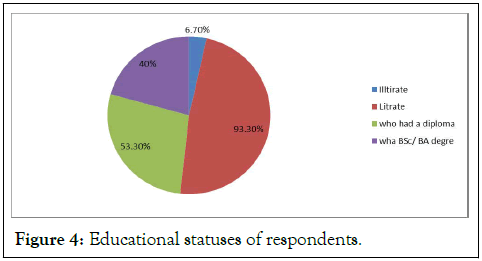
Figure 4: Educational statuses of respondents.
Hence, from this perspective, the number of domestic visitors is increasing from time to time. In this Figure 5 also indicates in year 2007 and 2008, the number tourist flow from domestic and international tourists has drastically fallen. This is attributed to the fact that, lack of peace and stability among society was going on those year. So, both domestic and international tourists avoided to come to the area due to the absence of peace. Furthermore, though the total number of tourists in 2009, 2010 and 2011 year is higher than the number of tourist in 2007 and 2008. This difference happened due to those year peace and stability more stable than the year 2007 and 2008.
Lack of peace and stability among society was going on those years. So, both domestic and international tourists avoided to come to the area due to the absence of peace.
Furthermore, though the total number of tourists in 2009, 2010 and 2011 year is higher than the number of tourist in 2007 and 2008. This difference happened due to those year peace and stability more stable than the year 2007 and 2008.
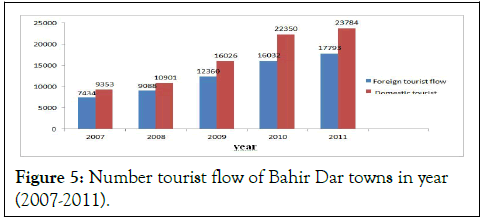
Figure 5: Number tourist flow of Bahir Dar towns in year (2007-2011).
Tourist flow to Bahir Dar town
As indicated in the below Figure 6, the number of tourist in Bahir Dar town from year 2005-2011. Even through the number of tourist arrival both increase and decrease do to the present and the absent peace and stability. This indicates tourists flow to Bahir Dar town was around 48,354 in 2005 and the trends of tourist flow increase to 49,801 in 2006; however, in 2007 the number of tourist was decrease to 16, 787 from 49,801. This is due to the lake of peace and stability present limits the interest of tourist visit to Bahir Dar town. The number tourist was increase from 19,889 in 2008 up to 47, 977 in 2011. This was indicate due to peace and stability more increase time to time increase tourists and increase the promotional activities for development tourism resource with different sites of Bahir Dar town (Table 1).
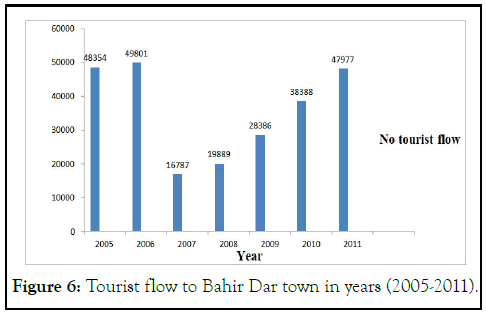
Figure 6: Tourist flow to Bahir Dar town in years (2005-2011).
| Question asked | Statement | No. of respondent | Percentage |
|---|---|---|---|
| I believe that instability in the other parts of Ethiopia has affected tourist flow to Bahir Dar town. | Agree | 25 | 55.60% |
| I believe that instability in the other parts of Ethiopia has affected tourist flow to Bahir Dar town. | Strongly agree | 10 | 22.20% |
| I believe that instability in the other parts of Ethiopia has affected tourist flow to Bahir Dar town. | Neutral | 2 | 4.40% |
| I believe that instability in the other parts of Ethiopia has affected tourist flow to Bahir Dar town. | Disagree | 5 | 11.10% |
| I believe that instability in the other parts of Ethiopia has affected tourist flow to Bahir Dar town. | Strongly disagree | 3 | 6.70% |
| Total | 45 | 100 |
Table 1: Impact of political instability for tourist flow in to Bahir Dar town.
With regard to the effect of political instability in the other part of Ethiopia affect tourist flow to Bahir Dar town, majority of respondents (55.6%) agree with the idea that states political instability in the other part of Ethiopia has affected tourist flow to Bahir Dar town. On the other hand 11.1% of the respondents disagree that the instability in the other part of Ethiopia has an effect on the flow of tourist in the Bahir Dar town. The rest about 4.4% of the respondents did not totally notice the effect of instability on tourist flow in Bahir Dar town. Indeed, majority of the respondent shows that instability in the other part of Ethiopia does significantly affect tourist flow in to the Bahir Dar town.
Effect of political instability length of stay of tourists in Bahir Dar
The length of tourist stay in the tourism destination areas can be the sources of tourism benefit in the study area and wants to stability (Table 2).
| The length of tourists to stay in Bahir Dar city | Frequency | Percentage |
|---|---|---|
| 1 day-3 days | 20 | 44% |
| 4 days-7 days | 14 | 31% |
| 8 days-10 days | 8 | 18% |
| Above 10 days | 3 | 7% |
| Total | 45 | 100 |
Table 2: Distribution of respondents in terms of international tourists stays in Bahir Dar city.
The length of tourists to stay can be one of the indicator stability of the country and a source of tourism socioeconomic benefits to the local community in Bahir Dar city. The study findings that, demonstrate most of respondents (44%) were answered that international tourists stay in 1 up to 3 days, (31%) international tourists to stay 4 up to 7 days, (18%) were to stay 8 up to 10 days and (7%) of respondents replied that international tourists to keep on the city was above 10 days. This result implies that international tourists stay in Bahir Dar city a short time when they visit destination sites. Staying short time for tourists indicates lake stability of the town in order to fill full tourist needs and also this reduce the income which might be generated by hotels, gust houses, entertainment centres, transport and restaurants operated especially by Bahir Dar people. The link of local people to the tourists can be a source of socio economic benefits to the societies (Table 3).
| Domestic tourists stay in Bahir Dar city | Frequency |
|---|---|
| 1 day-3 days | 26 |
| 4 days-7 days | 10 |
| 8 days-10 days | 6 |
| Above 10 days | 3 |
| Total | 45 |
Table 3: Distribution of respondents in terms of domestic tourists stays in Bahir Dar city.
The length of stay that denotes the amount of time that tourist spends at a given destination, whereas the duration of a tourism trip refers to the length of time between departure from and return to home. The length of stay of tourists can be a source of tourism socioeconomic benefits to the local community in Bahir Dar city. The study findings (Table 4), demonstrate that most of respondents (58%) domestic tourists stay 1 up to 3 days to, with (22%) domestic tourists were staying 4 up to 7 days, (13%) of respondents responded that domestic tourists to stay 8 up to 10 days and (7%) of respondents responded that domestic tourists stay above 10 days to stay in study area, that realized tourists stay in a short time when they visit destination sites. Staying short time for tourists may reduce the income which might be generated by hotels, gust houses, entertainment centres, transport and restaurants operated especially by Bahir Dar people. This implies that tourism business activities of the local people that tourists can be needs political stability and safety are perquisites in order to stay long time.
The findings of this study showed that domestic and international tourists were stay a short period of time when they visit destination sites in Bahir Dar city, this is may the reason of less benefited from tourism to get local community. The length of tourist stay in the tourism destination areas can be the sources of tourism benefit in the study area and needs safety and security spatial from civil unrest.
Effect of political condition for tourism investment in Bahir Dar town
As it can be seen from the below Figure 7, 20 (44.4%) of respondents disagree with an idea Bahir Dar town to be politically unstable town for tourism investment. Similarly, 12 (26.7%) of respondents strongly disagree with the same idea. On the other hand 4 (8.9%) the respondents strongly agree and 8 (17.8%) of the respondents agree with the above statement. The rest 1 (2.2%) of the respondents have no idea whether Ethiopia is politically stable or not. The highest of the response 20 (44.4%) shows that really Bahir Dar town is politically stable country. Many of interviewees confirm that now Bahir Dar town is better political stability and becoming among one top tourist destination site in Ethiopia. But the some respondents have indicated that some reports ethnic instability develop suspicion on the views of visitors, specifically foreign visitors have fear about the instability of the country. Since, on one hand, realization of private investment may encounter various constraints and limitations, such as general lack of capital.
Fear for low profitability of invested capital, fear for political instability, lack of infrastructure in the destination, absence of social services and skilled labor.
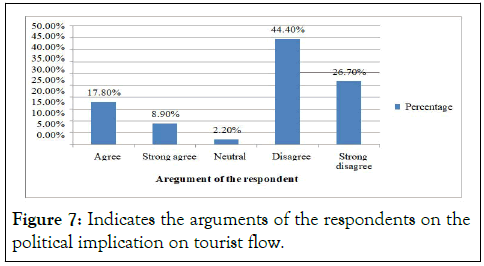
Figure 7: Indicates the arguments of the respondents on the political implication on tourist flow.
Economic impacts of political instability
To assess the existing economic impacts of impacts of political instability in the study area, one FGD was conducted with participants from various tourism stakeholders in the study area. Moreover, semi structured interview was also conducted to acquire the necessary information in relation to the issue. The FGD discussants have mentioned various economic impacts brought due to the arrival of political instability to the area. According to the majority's response, economic impacts of political instability including decline of employment opportunity to the local community, the sale of goods and services for the incoming domestic and international tourists, acting as effects for various economic activities in the study area, redistribution of income are mentioned frequently. Higher degrees of political instability are associated with lower growth rate of GDP per capita. Regarding channels of transmission, we find that political instability adversely affects growth by lowering the rates of productivity growth and, to a smaller degree, physical and human capital accumulation.
The effect of political instability on the tourist flow
The political instability results in a decrease of the numbers of tourists which visited Bahir Dar town. This consequently led to a decline in revenues. The modern travellers are concerned about their safety. Political violence leads tourists to opt for places where there is peace and sometimes may decide not to go at all. Travellers (tourists) are generally very sensitive to their security and safety of the country they go for holidaying. The worst events which affect tourism sector are those caused by mankind such as wars, violence and political turmoil. These events succeed in frightening travellers is sensitive to political instability and other threats that have impact in intimidating tourists (Table 4).
| Item | Percentage |
|---|---|
| Is political instability affecting your interest in selecting destination? | 96% |
| Did you get any political instability situations in Bahir Dar town in your staying time? | 4% |
Table 4: Shows the tourist respondents regarding to political situation in the site.
The above table indicates most of the tourist respondent said political situations affect their interest of destination selection which 96% are answering yes and 4% of the tourist respondent said political instability are not affecting their interest in selecting destination.
As the open ended questionnaire indicates that 96% of the respondent said yes and when they explain their reasons all of the respondents replied that peace and security has a great role to planning tour destination and play pivotal role for betterment of life at large.
Based on the data analyzed in the previous part the following conclusions are drawing for the successful assessment of the influence political instability on tourism activities of the Bahir Dar town. Political stability has vital importance to tourism activity. However as per the finding of the study, the researchers conclude that the tourism activities of Bahir Dar town as follow:
• The collaboration of the stakeholders is not sufficient to
satisfy the need or request of the tourist.
• The relationship between public and government is very weak.
• The commitment of stakeholder for prevalence of peace and
stability is very weak.
• There is lack of tourism expert. As a result there is a
communication gap (misunderstanding) with the principle
and ethics of tourism industry.
• Lack of government activity and commitment to ensure peace
and stability.
Citation: Chukala D (2023) Effect of Political Instability on Tourist Flow Incase Bair-Dar Town, Ethiopia. J Tourism Hospit. 12:527.
Received: 30-Mar-2023, Manuscript No. JTH-23-22693; Editor assigned: 03-Apr-2023, Pre QC No. JTH-23-22693 (PQ); Reviewed: 17-Apr-2023, QC No. JTH-23-22693; Revised: 02-Jun-2023, Manuscript No. JTH-23-22693 (R); Published: 09-Jun-2023 , DOI: 10.35248/2167-0269.23.12.527
Copyright: © 2023 Chukala D. This is an open-access article distributed under the terms of the Creative Commons Attribution License, which permits unrestricted use, distribution, and reproduction in any medium, provided the original author and source are credited.